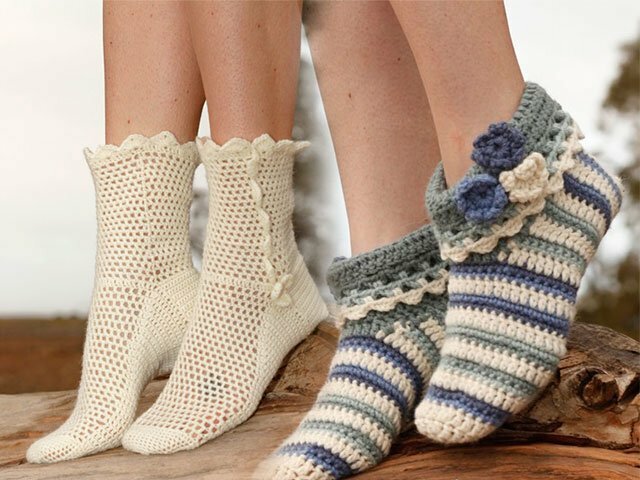
- 1 How to crochet socks( diagrams step by step in pictures)
- 1.1 Home women's woolen sneakers for an adult foot( m for women)
- 1.2 Ideas for men
- 2 Knitted children's models( photo)
- 2.1 Simple baby pins
- 3 Video lessons "Knitted crochet for beginners »(crochet)
- 3.1 Beautiful openwork socks - master class
- 3.2 Slipper-shoes from motives
- 3.3 Socks for men
- 3.4 Female version
- 3.5 Knitting socks for newborns
- 3.6 Boots crocodiles for toddlers
- 3.7 Baby sneakers for boys
- 3.8 Home version on a felt sole
- 3.9 Interesting slippers-minions
Today I propose to discuss a very important topic "How to knit crochet socks".Socks are more suitable for the cold season, so we will choose thick yarn. But if you are a needlewoman with experience, you can try a complex openwork model, which will take a very long time.
How to crochet socks( diagrams in steps in pictures)
How to quickly learn to knit crocheted baby crochets or an adult if you are still a beginner? Especially for you, we collected the most simple and interesting lessons from the best masters of the network. Starting with the simplest offer to move on to more complex, pleasing your home with warm, cozy new things.
Homemade women's woolen sneakers for an adult leg( m for women)
This model will take a minimum of time to mate, and if you follow all the recommendations correctly, you will be able to move on to more complex products in the future.
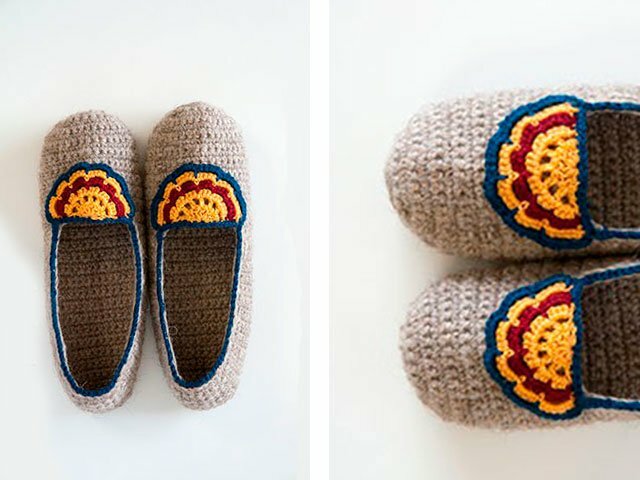
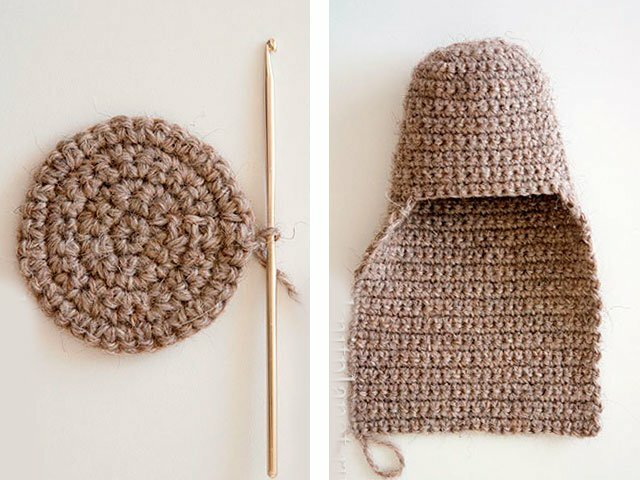 Now we begin to form the heel. For this we divide the loops into three parts. The number of loops of the middle part is 1/3 of 24 loops - 8 loops are produced. If you have 1 loop in the rest - add it to the middle part, if 2 loops - one to the side parts. Form the heel will be shortened rows. We begin to tie the heel from the wrong side. We send 8 bars without the first part, then 7 bars without middle cake, we pass the 8th column of the middle part, and in the first loop of the third part we knit the connecting post. The heel is obtained more accurately if the last side is on the front side, tying the connecting post as usual, inserting the hook into the loop in front, and on the wrong side - inserting the hook into the loop from behind. We turn the work on the front side.
Now we begin to form the heel. For this we divide the loops into three parts. The number of loops of the middle part is 1/3 of 24 loops - 8 loops are produced. If you have 1 loop in the rest - add it to the middle part, if 2 loops - one to the side parts. Form the heel will be shortened rows. We begin to tie the heel from the wrong side. We send 8 bars without the first part, then 7 bars without middle cake, we pass the 8th column of the middle part, and in the first loop of the third part we knit the connecting post. The heel is obtained more accurately if the last side is on the front side, tying the connecting post as usual, inserting the hook into the loop in front, and on the wrong side - inserting the hook into the loop from behind. We turn the work on the front side. 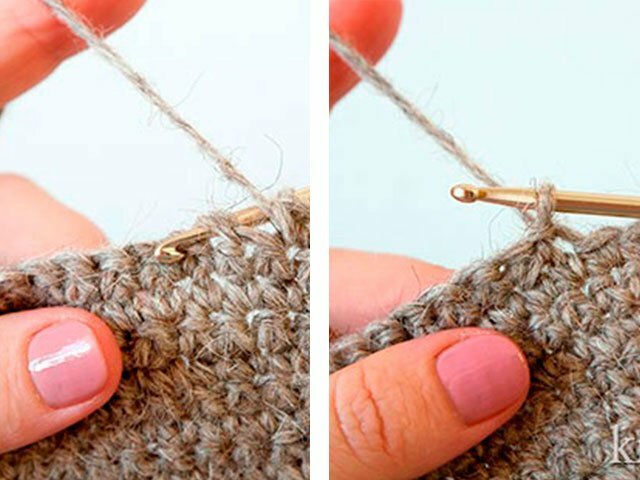 The first column in the shortened row is knit without a lifting loop in the first loop from the hook. Again, we sew 7 loops of the middle part with columns without a crochet, and in the first loop of the side part we knit the connecting column, while the hook is inserted into the loop in front.
The first column in the shortened row is knit without a lifting loop in the first loop from the hook. Again, we sew 7 loops of the middle part with columns without a crochet, and in the first loop of the side part we knit the connecting column, while the hook is inserted into the loop in front. 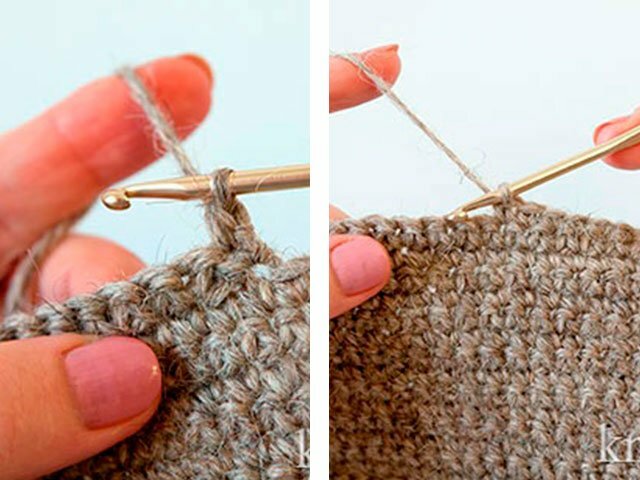 We continue to correctly tie the heel in the same way, attaching the hinges from the side parts. We finish knitting a heel with a facial series. As a result, you get such a neat little heel. Now we tie the edge of the slipper( except for the heel) with columns without a crochet, slightly tightening the edge for a better fit of the slipper on the leg. Then we knit along the edge a row of connecting posts, already including the heel. Cut the thread and hide its end. The slipper is ready. The second knitting is exactly the same. In our example, the decoration is made of motifs in the style of "patchwork", and in the end the edge is additionally tied with two rows of connecting posts of blue yarn. The motives are attached to the slipper in the process of tying the edge.
We continue to correctly tie the heel in the same way, attaching the hinges from the side parts. We finish knitting a heel with a facial series. As a result, you get such a neat little heel. Now we tie the edge of the slipper( except for the heel) with columns without a crochet, slightly tightening the edge for a better fit of the slipper on the leg. Then we knit along the edge a row of connecting posts, already including the heel. Cut the thread and hide its end. The slipper is ready. The second knitting is exactly the same. In our example, the decoration is made of motifs in the style of "patchwork", and in the end the edge is additionally tied with two rows of connecting posts of blue yarn. The motives are attached to the slipper in the process of tying the edge. 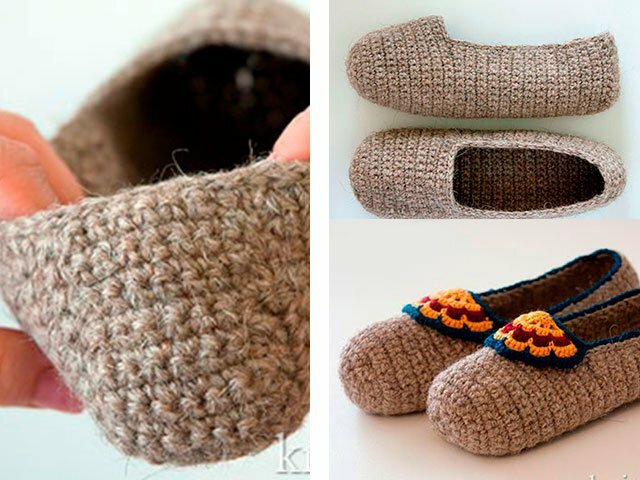
Ideas for men
Men's socks for the beloved are the easiest way.
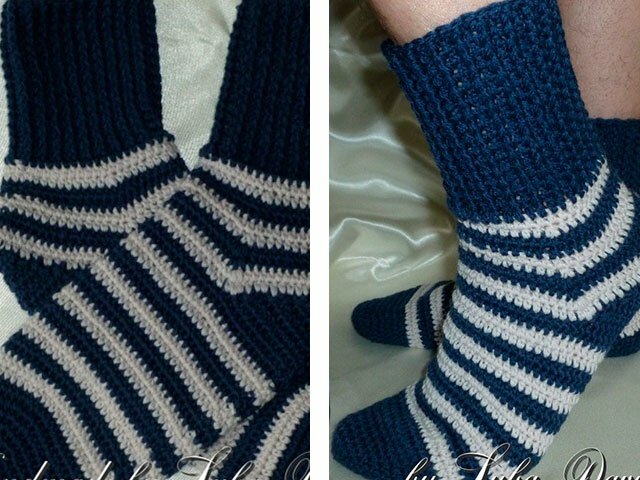
Size 42
Materials:
1. Usual woolen thin yarn for socks( in two pieces)
2. Hook 2.5 mm
3. Hours 3 per each sock
Sock will be knit from the toe. The sock is connected by half-columns!
Dial 4 in.etc., close in the ring. .. further on the scheme.
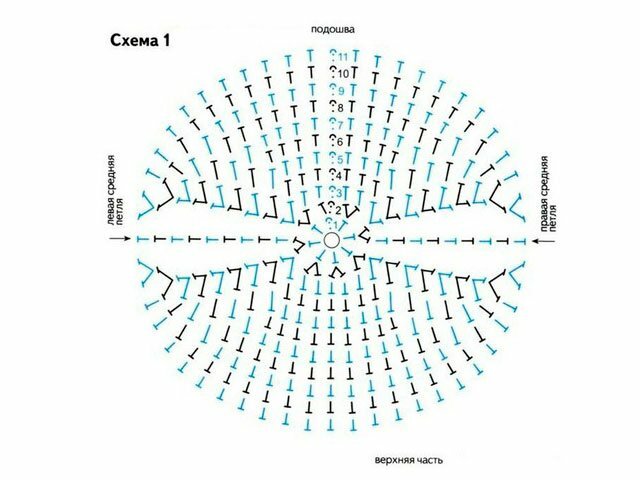
The last row of the toe = 52 loops. Next, we continue to knit in a circle with half-columns, adding in the first row after the toe 2 loops = 54 loops.20 rows of 54 loops in each circular row. The seam is located on the sole.
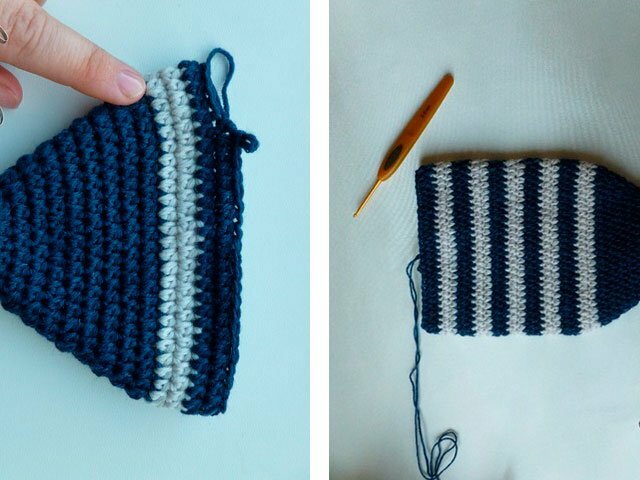
For the heel, separate the loops in the floor. We knit on 27 loops of the sole. To do this, from the seam, pull back the connecting posts of the 13 loops.
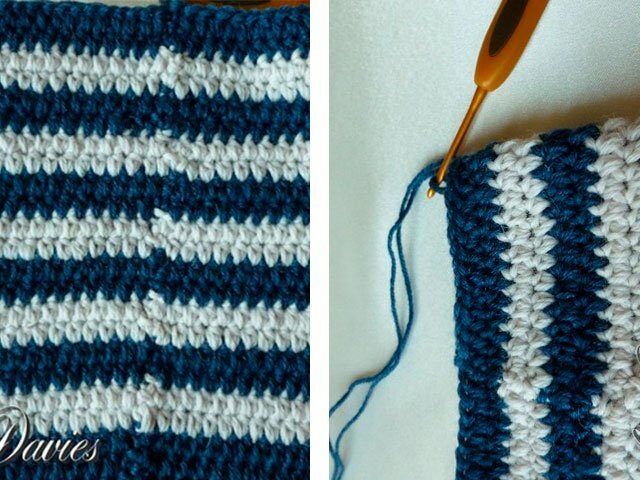
The lower part of the heel is a triangle. We continue to work in semi-columns.
Knit a triangle on 27 loops, reducing in each row on both sides one loop( tie two half-columns together), until there is 1 loop left on the hook.
Now we will perform the lifting wedge and the back of the heel together. To do this, draw along the edge of the triangle on each side of the 21 loops, on the front, which we did not touch, should be 28 loops = the first round circle( I have it made beige threads) 70 loops.
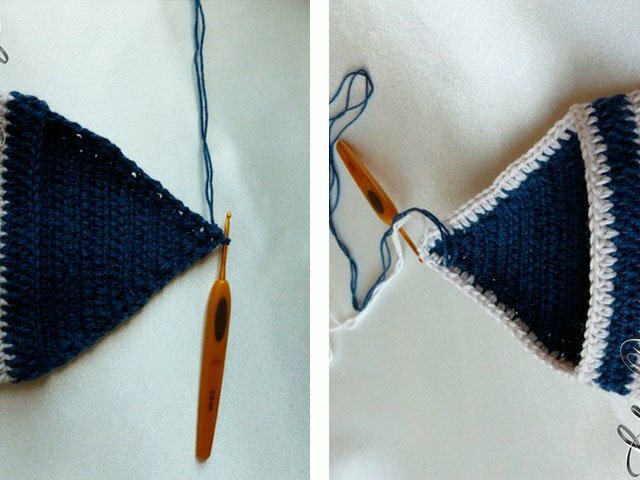
Side view. Note that the triangle is the bottom of the heel, not the entire heel. To form a wedge, lift both sides of the top of the sock. Decrease = 3 half-column bound together.
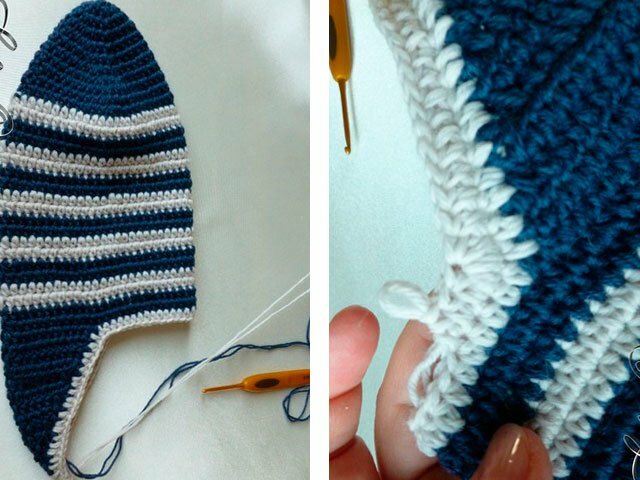
Reduce until there are no loops left in the row. Only 10 circular rows.
Now an elastic band. Knit by the scheme:
1 row: columns with a crochet in each loop
2 row: 2 in.lifting, * facial relief column with a crochet, 1 simple column with a crochet *, repeat from * to * to the end of the row.
3-16 series: 2 in.lifting, * the facial relief column in the relief column of the previous row, the column with the crochet in the column with the crochet of the previous row *, repeat from * to * to the end of the row.
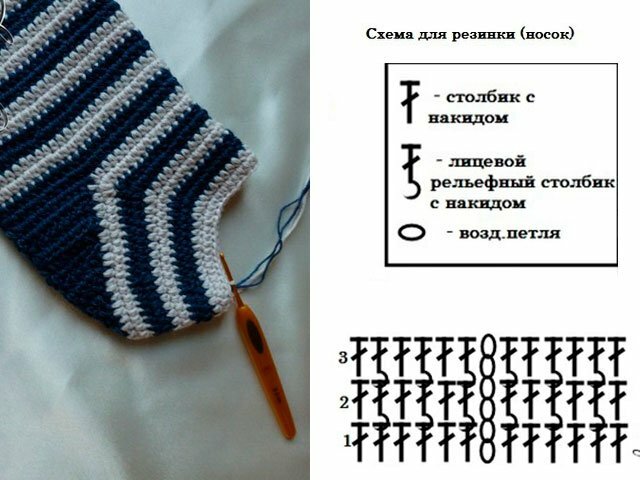
Done!
Knitted children's models( photos)
Baby legs should always be warm, so women like to delight kids with funny hand-made articles with their favorite characters.
Simple child pins for a child
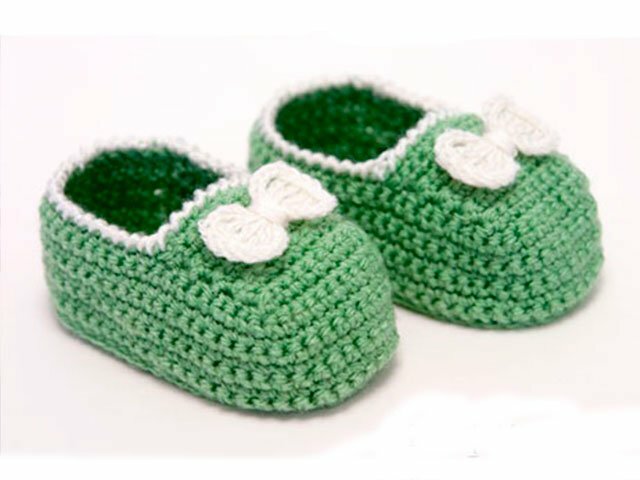
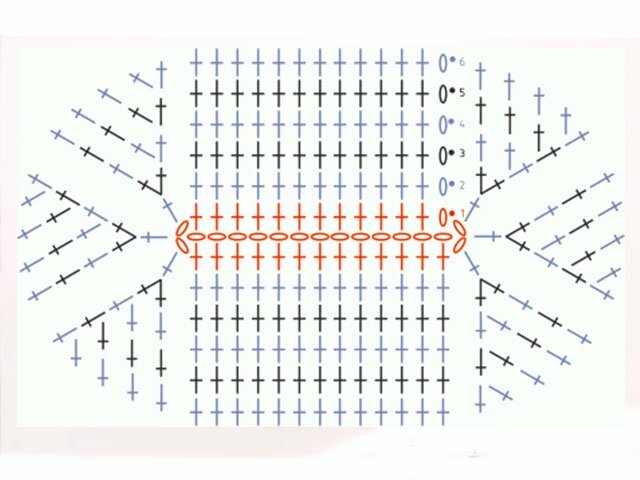 Lateral part We knit the tops of the pins with columns without crochet with swivel rows. The first row is knitted with backing stitches( at work) without crochet to form a welt. For lifting we knit one air loop. We close the row with a connecting column, turn the work and knit the next row. Next, we continue to knit 7 rows in rows without a crochet. A total of 8 rows of the are produced. The height of the side part can be from 2 to 3 cm. In our case, 3 cm. Mouse The mouse is knitted in shorter rows. We find the center of the soles in front: 13 loops of the middle part, plus 7 loops of the front - the 21st loop from the beginning of the row will be the middle of the boot boot from the front. You can just bend the booties in the middle. From the center, mark 5 loops to the left and right. Determine the number of loops needed for knitting the toe. The width of the toe is equal to the width of the sole or slightly less than the .In our case, these are 11 loops( columns).In the photo, the center of the toe is indicated by a pink marker, and the extreme toes of the toe are marked with blue markers.
Lateral part We knit the tops of the pins with columns without crochet with swivel rows. The first row is knitted with backing stitches( at work) without crochet to form a welt. For lifting we knit one air loop. We close the row with a connecting column, turn the work and knit the next row. Next, we continue to knit 7 rows in rows without a crochet. A total of 8 rows of the are produced. The height of the side part can be from 2 to 3 cm. In our case, 3 cm. Mouse The mouse is knitted in shorter rows. We find the center of the soles in front: 13 loops of the middle part, plus 7 loops of the front - the 21st loop from the beginning of the row will be the middle of the boot boot from the front. You can just bend the booties in the middle. From the center, mark 5 loops to the left and right. Determine the number of loops needed for knitting the toe. The width of the toe is equal to the width of the sole or slightly less than the .In our case, these are 11 loops( columns).In the photo, the center of the toe is indicated by a pink marker, and the extreme toes of the toe are marked with blue markers. 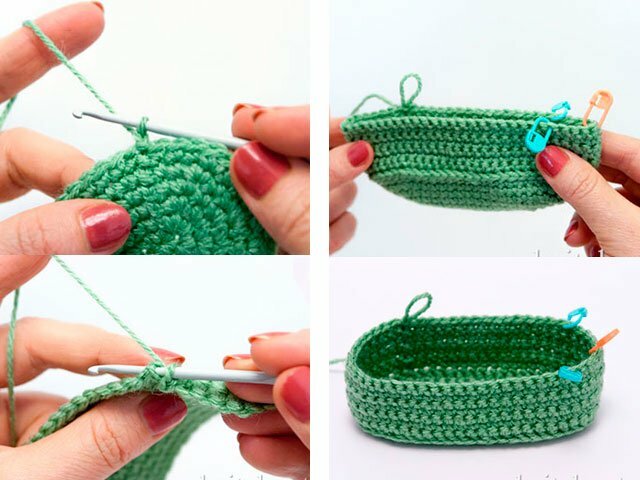 9th row: 15 side side loops and 10 toe loops we knit with strings without crochet, loop through, 1 connecting column; 10th row: 10 weights of the toe knit by strings without crochet, loop through, connecting column. Warning! The first loop in the row turns dense, do not miss it.
9th row: 15 side side loops and 10 toe loops we knit with strings without crochet, loop through, 1 connecting column; 10th row: 10 weights of the toe knit by strings without crochet, loop through, connecting column. Warning! The first loop in the row turns dense, do not miss it. 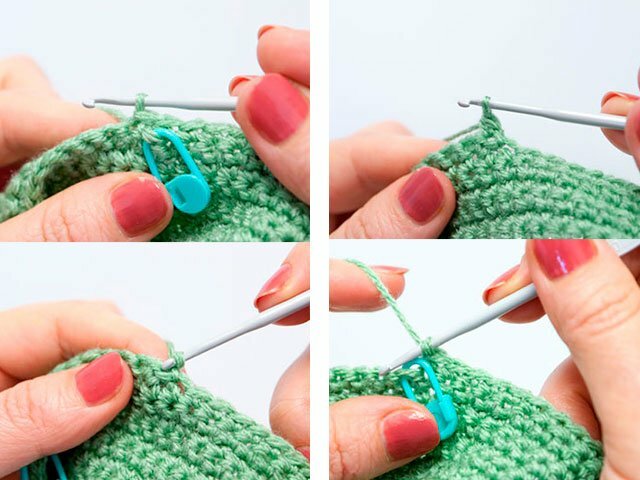 Next, we knit another 8 rows in the same way as the 10th row. In total, 10 rows are obtained. The toe occupies about half of the bootie along the length. In the 19th row of the , we continue to knit the booties in a circle and close the row. Loops in this series are not to be killed. We tie the top of the booties with the Broom step. We also knit the second booties, as well as the first one. We decorated the booties with a bow, crocheted. You can decorate booties to your liking.
Next, we knit another 8 rows in the same way as the 10th row. In total, 10 rows are obtained. The toe occupies about half of the bootie along the length. In the 19th row of the , we continue to knit the booties in a circle and close the row. Loops in this series are not to be killed. We tie the top of the booties with the Broom step. We also knit the second booties, as well as the first one. We decorated the booties with a bow, crocheted. You can decorate booties to your liking. Video lessons "Crochet socks for beginners"( crochet)
A video tutorial with detailed description helps to disassemble in detail the whole process of knitting. Thanks to accurate calculations and valuable comments by the master, the student is able to master even the most complex model.
Beautiful openwork socks - master class
Openwork products look very special, but they require more patience. Starting from the elastic band you can tie them with the finest thread, creating the finest lace( short and high styles look good).
shoes for women
socks for women
for women
for children
The legs of a newborn should be warm, so I suggest universal fun models for the youngest.
